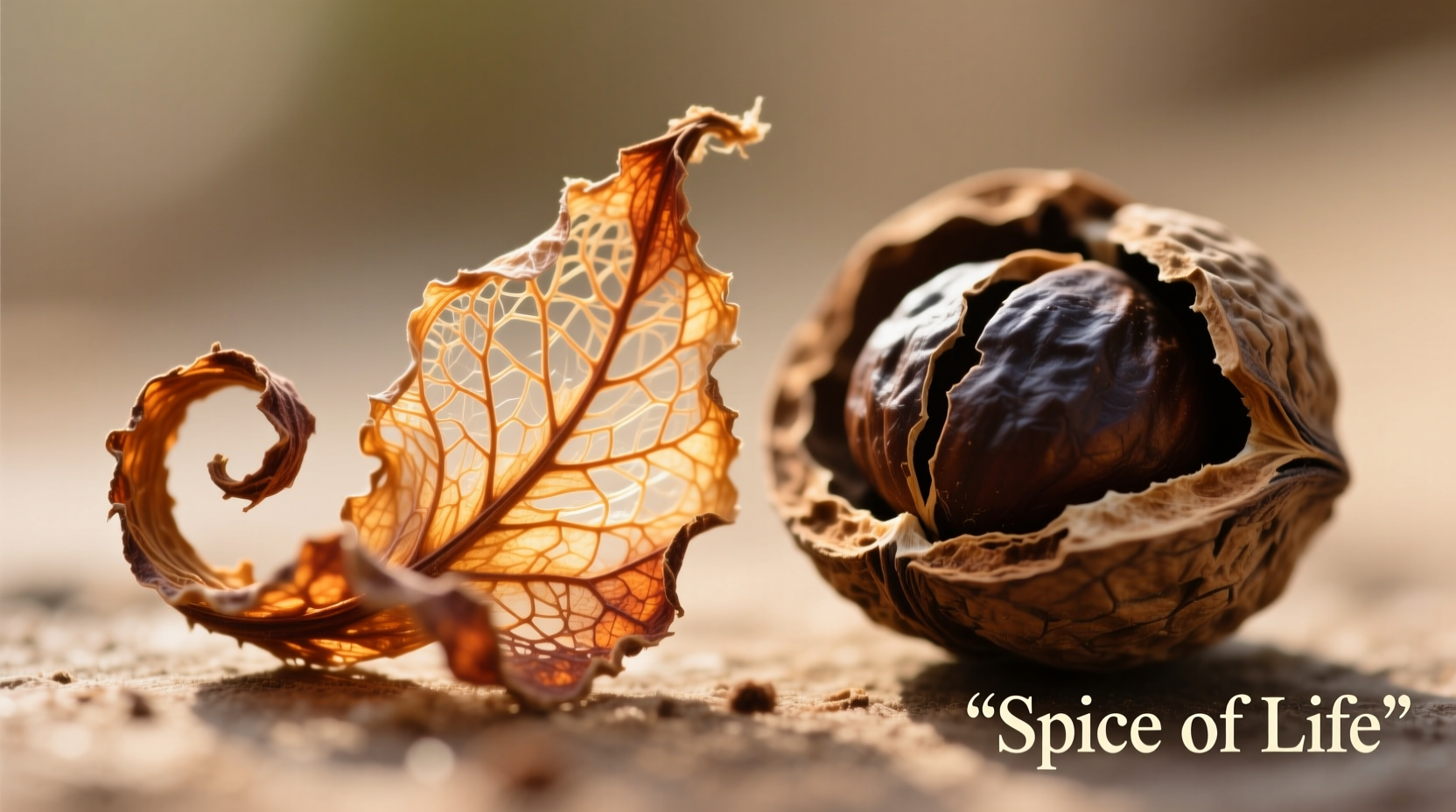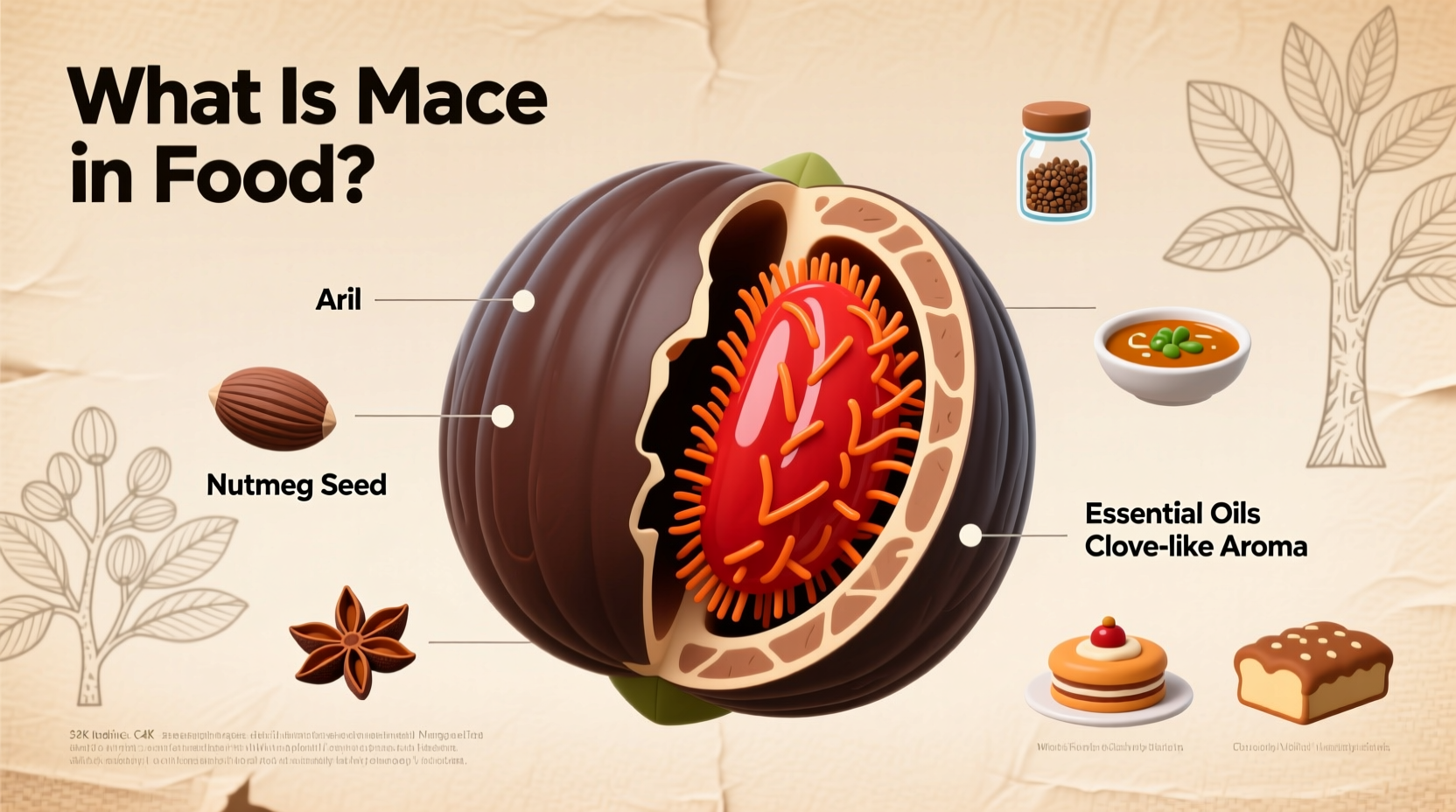When you're exploring spices for your kitchen, understanding mace's unique characteristics can transform your cooking. This often-overlooked spice has been enhancing global cuisines for centuries, yet many home cooks remain unfamiliar with its proper use and distinctive qualities.
What Exactly Is Mace and Where Does It Come From?
Mace originates from the Myristica fragrans tree, the same tropical evergreen that produces nutmeg. While nutmeg is the seed itself, mace is the thin, web-like membrane that encases the seed. Harvesters carefully remove this aril, then dry it until it transforms from bright red to a distinctive amber-orange color. During this drying process, the mace curls into distinctive 'blades' or 'peelings' that you'll find in spice markets.
The USDA classifies mace as a valuable spice commodity with specific quality standards for international trade. Its production remains concentrated in Indonesia, Grenada, and India, where ideal tropical conditions support the Myristica fragrans trees.

Mace vs. Nutmeg: Understanding the Critical Differences
Many cooks confuse mace with nutmeg, but these spices offer distinct culinary properties. Understanding their differences helps you make better choices in the kitchen.
| Characteristic | Mace | Nutmeg |
|---|---|---|
| Origin on Plant | Outer aril (covering) | Inner seed |
| Flavor Profile | More delicate, citrus notes, subtle pepperiness | Warmer, sweeter, more intense |
| Color Impact | Imparts golden hue without darkening dishes | Can create darker tones in light-colored dishes |
| Best Culinary Uses | Light-colored sauces, baked goods, delicate meats | Hearty stews, root vegetable dishes, stronger-flavored recipes |
| Shelf Life | Approximately 2 years for optimal flavor | Approximately 3-4 years for optimal flavor |
How to Use Mace in Your Cooking: Practical Applications
Mace shines in recipes where you want warmth without overwhelming spice. Professional chefs value mace for its ability to enhance other flavors rather than dominate them. Here's how to incorporate it effectively:
- Baking and desserts: Use ground mace in apple pies, pumpkin bread, and custards where its citrus notes complement fruit flavors
- Savory applications: Add to béchamel sauce, creamed spinach, or potato gratin for subtle complexity
- Meat preparation: Rub whole mace blades on uncooked chicken or fish before roasting
- Pickling and preserving: Include in brines for cucumbers, onions, or cauliflower
- Infused liquids: Steep whole blades in milk for custards or cream sauces
When substituting, remember that mace is generally used in smaller quantities than nutmeg—about three-quarters the amount. Its more delicate flavor means it works particularly well in light-colored dishes where nutmeg might discolor the final product.
The Historical Journey of Mace Through Global Cuisines
Mace's history reveals why this spice became so valuable across civilizations. The spice's journey demonstrates how trade routes shaped culinary traditions:
1st-3rd Century CE: Roman physicians document mace's medicinal properties, though it remains extremely rare in Europe
7th-10th Century: Arab traders establish mace trade routes, introducing it to Middle Eastern and North African cuisines
13th-15th Century: Venetian merchants control European mace trade, making it more accessible to medieval European kitchens
16th-17th Century: Dutch East India Company monopolizes mace production, deliberately destroying trees on other islands to maintain control
18th Century: French smugglers successfully transplant mace trees to Grenada and other Caribbean islands, breaking the Dutch monopoly
19th-20th Century: Mace becomes more widely available globally, finding its place in diverse culinary traditions from Scandinavian baking to Indian curries
According to historical records from the Encyclopedia Britannica, mace was often valued more highly than nutmeg in medieval Europe due to its more delicate flavor and the labor-intensive process required to harvest and dry the fragile arils.
Storing Mace for Maximum Flavor Preservation
Proper storage significantly impacts mace's shelf life and potency. Whole mace blades retain their flavor much longer than pre-ground versions. For optimal freshness:
- Store whole mace in an airtight container away from light and heat
- Keep away from strong-smelling foods as mace readily absorbs odors
- Grind only what you need immediately before use for strongest flavor
- Check for freshness by rubbing a blade between your fingers—fresh mace should release a distinctive citrus-peppery aroma
When stored properly, whole mace maintains peak flavor for about two years, while ground mace begins losing potency within six months. The USDA FoodData Central confirms that proper storage preserves the essential oils responsible for mace's distinctive flavor profile.
Nutritional Benefits and Safety Considerations
Beyond its culinary applications, mace offers several nutritional benefits supported by scientific research. According to studies published in the National Center for Biotechnology Information, mace contains:
- Myristicin, which may have neuroprotective properties
- Significant levels of antioxidants that combat oxidative stress
- Trace minerals including iron, magnesium, and manganese
- Anti-inflammatory compounds that may support digestive health
While generally recognized as safe for culinary use, mace should be consumed in moderation. Extremely high doses (far beyond typical culinary amounts) may cause adverse effects due to its myristicin content. Pregnant women should consult healthcare providers about appropriate consumption levels, as with many spices.
Where to Find Quality Mace and What to Look For
When purchasing mace, quality makes a significant difference in flavor. Look for these characteristics:
- Color: High-quality mace blades display a vibrant orange-red hue (avoid dull brown specimens)
- Texture: Should feel dry but not brittle, with some flexibility
- Aroma: Should release a warm, citrusy scent when rubbed between fingers
- Form: Whole blades maintain freshness longer than pre-ground mace
Specialty spice merchants often offer superior quality compared to standard grocery stores. For the freshest product, consider purchasing from retailers who specialize in single-origin spices with clear harvest dates.
Common Questions About Mace in Cooking
Can I substitute nutmeg for mace in recipes?
Yes, but with adjustments. Use approximately 25% less nutmeg than the mace called for, as nutmeg has a stronger, sweeter flavor. Mace offers more citrus notes and is better for light-colored dishes where you don't want dark specks. For delicate sauces or white cakes, mace is preferable to avoid discoloration.
How much ground mace equals one whole blade?
One whole mace blade equals approximately 1/8 teaspoon of ground mace. However, freshly ground mace from whole blades provides significantly more vibrant flavor than pre-ground versions, so you may need slightly less when using freshly ground mace for optimal results.
Which cuisines use mace most prominently?
Mace features prominently in Scandinavian baking (especially in cookies and cakes), Indian cuisine (particularly in biryanis and kormas), Moroccan tagines, and traditional British meat pies. It's also essential in many Dutch and German spice blends. In Indonesian cuisine, where mace originates, it's used in specialty dishes like opor ayam (chicken in coconut milk).
Does mace have any health benefits?
Yes, mace contains antioxidants and compounds like myristicin that may offer neuroprotective benefits. It has traditionally been used to support digestion and may have anti-inflammatory properties. However, these benefits are associated with culinary use levels—extremely high doses can be problematic. Always consult a healthcare provider for medicinal applications.
Why is mace more expensive than nutmeg?
Mace commands a higher price because harvesting the delicate aril requires more labor than collecting nutmeg seeds. Each mace aril must be carefully separated from the nutmeg seed by hand, then dried without damaging its fragile structure. The yield is also lower—each nutmeg fruit produces only one piece of mace but one nutmeg seed.











 浙公网安备
33010002000092号
浙公网安备
33010002000092号 浙B2-20120091-4
浙B2-20120091-4